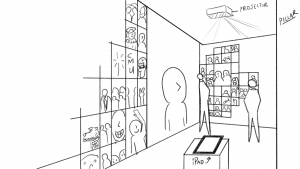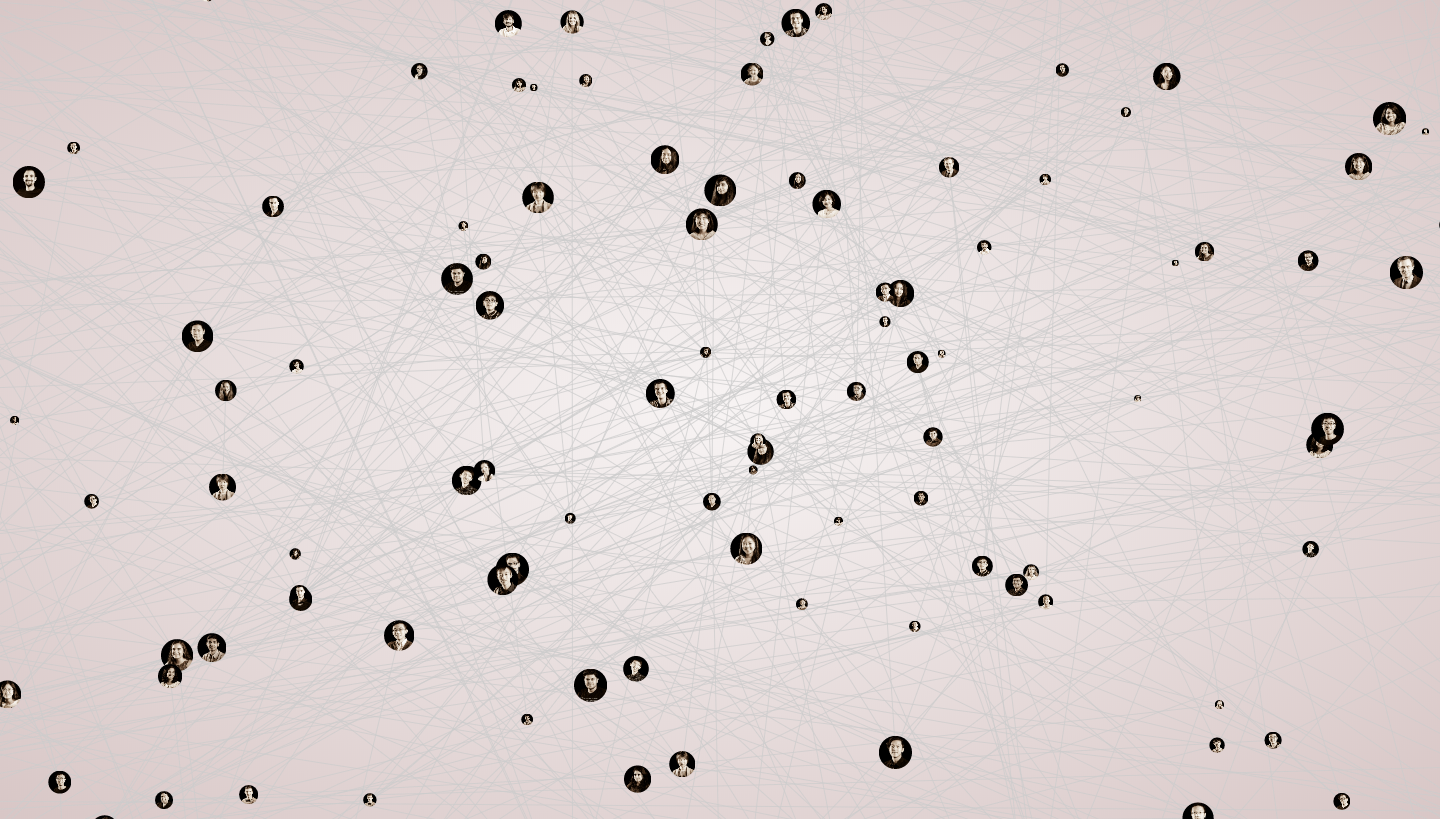The Work This Week:
Early in the week, we confirmed that we’d be meeting our client’s student ambassador research group next week – Monday 10/1 at 11AM. We also put together a concept art sketch of what our installation might look like.

Afterward, the week ended up focusing almost entirely on 1/4 walkarounds and 1/4 sitdowns, and the feedback we received from faculty.
1/4 Walkarounds and Sitdowns:
Faculty were excited about the core idea of using the installation to facilitate connection between visitors and providing the feeling of “I belong here.” They liked the idea of establishing this connection, especially, between students and alumni. They also had a multitude of wonderful suggestions for things we should focus on moving forward:
- The questions that we ask visitors to answer about themselves need to be heavily curated to provide a meaningful experience, because “these are the types of exhibits that actually last” [quote by Jesse Schell]. We need to develop questions that can envelope everyone that interacts with the installation.
- When we speak to our client’s student ambassador group, we should ask them direct questions about the types of interactions they have on tours. What are some types of patterns they’ve seen interacting with prospective students?
- Speaking of target audience, we should nail down not just general demographic, but specific groups. Because a group of students coming to visit with each other is different from a prospective student seeing the kiosk with a family. The previous ETC project that tackled material like this, Wall Walkers, ran into a problem in which they tried to reach every demographic and had too many target audiences.
- Also, we discussed the possibility of spending an extended time in the Tepper Building to talk with the students that come through there and see what their wants are.
- Additionally, we need to ask our client of the possibility of taking group selfies, as this helps with throughput and provides its own type of meaningful experience, yet also carries different challenges. Is it possible to have an installation in which you can take both individual and group selfies?
- We discussed the idea of using facial recognition software on the selfies. This might help in making sure people don’t take multiple pictures of themselves to stack into the archive. Yet the most important aspect that facial recognition software might do is making sure people aren’t taking inappropriate photos. There would have to be a face in the picture for it to be taken.
- Regarding the Platform, people were generally split on whether to go Projector vs. Touchscreen TV. The former is cheaper and cleaner, yet the latter works better with the light in the space, especially because the exhibit needs to be on during the day and night, and during all four seasons. A next step for us is to measure the lumens in the space now to see if using a projector is even possible.
- The platform question extends to the direct input we’re going to use. Kinect has been discussed briefly as a possibility, as well as iPad, DSLR Camera with Symbol, a phone with connection to the exhibit, etc.
- We also discussed the idea of the archive making the shape of a CMU symbol, like the Tartan, in some form. This led into a discussion of how to include CMU traditions, in some form, into the exhibit.
- In speaking with Carl Rosendahl at sitdowns, we talked a lot about how to incorporate a permission/consent form into the exhibit, especially considering that visitors’ photos will then be used for other visitors to see. We realized that having two consent forms (one before the photo is taken asking if the visitor wants to take the photo, and another after the photo is taken asking if the visitor is ok having the photo shared) might be a good direction.
- In speaking with Mike Christel at sitdowns, we discussed about how best to answer the question of “why or how am I unique?” Do we want to provide a flexible time frame (month/week/day) of input so that a student from a specific country can see that he/she was the only student from that country that interacted with the exhibit on a particular week, but was one of many that interacted with it over the course of a month.
We now have a better idea of what to focus on and what questions we need to answer going forward.
Going Forward:
We will be meeting with our client’s research group on Monday, but they’re not the only expert group that we will be consulting with. Going forward, we will be contacting Jess Hammer, Dave Culyba, and several other faculty that seemed interested in talking more with us. We also were directed to the Pittsburgh-based company Deep Local, who are also involved in marketing work, as a company we could get some advice from as well.
Plus, we should now be focusing on doing some field research as well, talking with students in the Tepper Building during the day.
We have a lot of questions to think about. Now let’s begin thinking about how to answer them.

